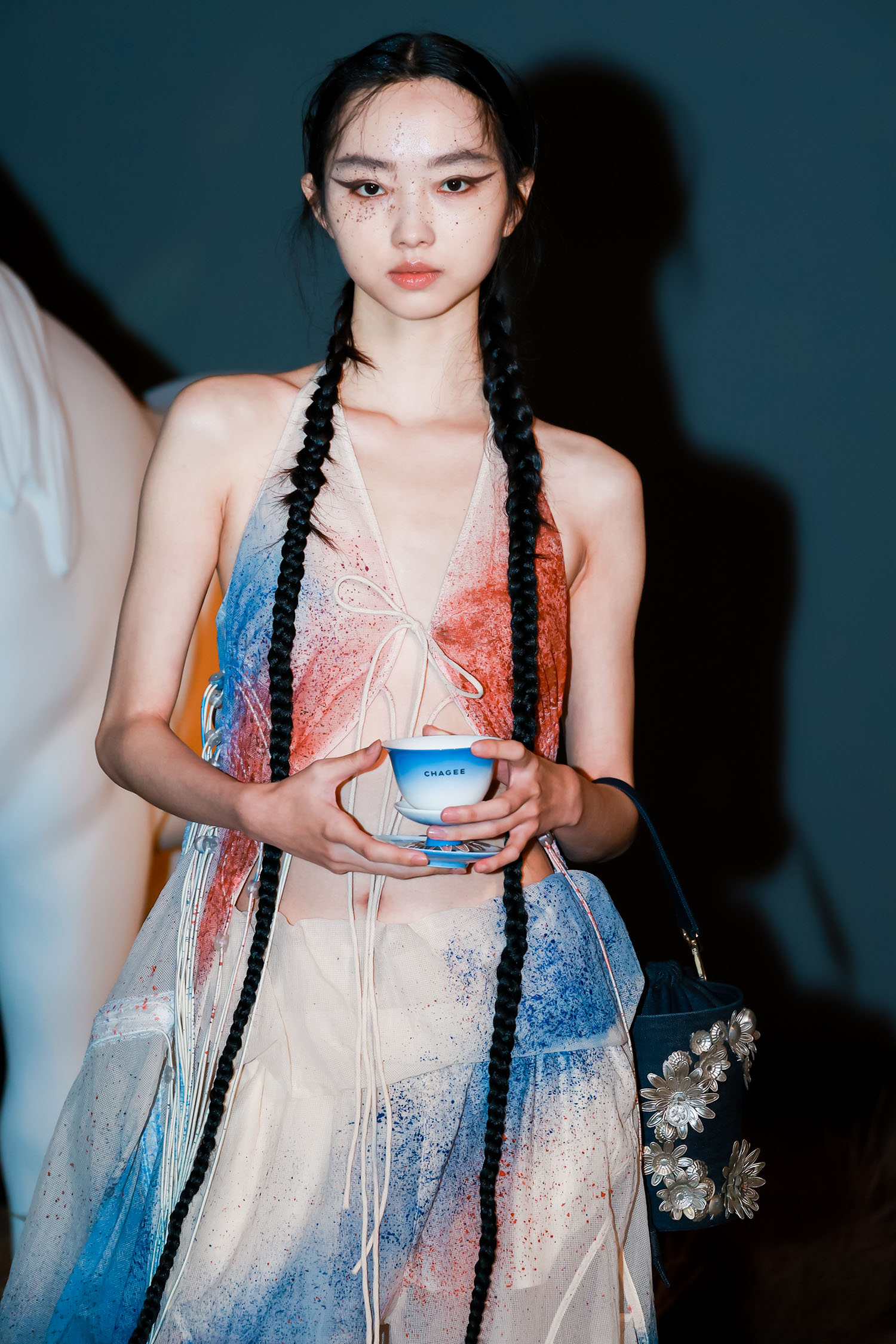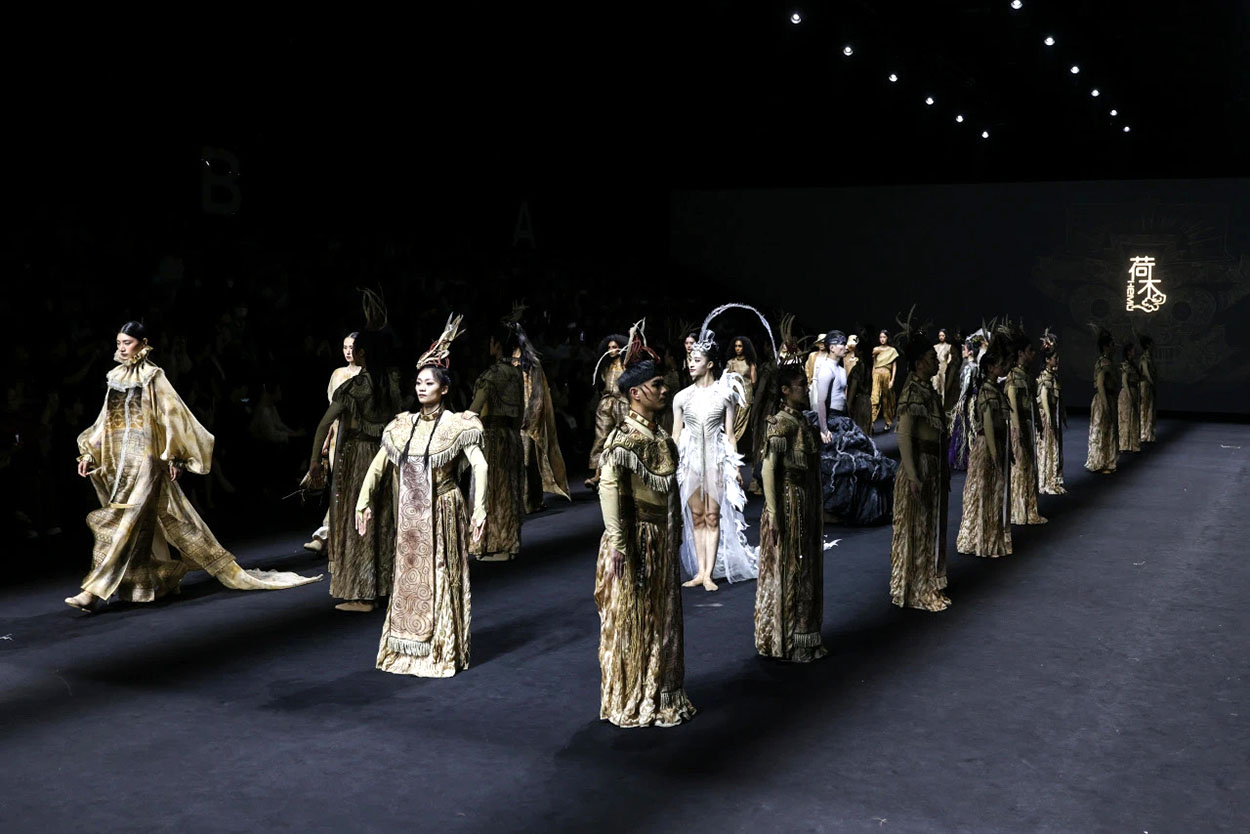
Meet the latest catwalk trend in the ongoing fashion week in Shanghai — xinzhongshi — the new Chinese style.
The style of clothing is typically defined as seamlessly integrating traditional Chinese elements with modern designs.
But as this fusion of traditional Chinese culture becomes increasingly popular, it is gradually prompting the industry to reflect, challenging the industry's transformation, and seeking new solutions to ensure its sustainability.
During the 2025 Spring/Summer Shanghai Fashion Week, xinzhongshi shows were a dominant factor. On Tuesday, emerging fashion designer Chen Anqi, in collaboration with the tea brand Chagee, elevated the popularity of the new Chinese style through a cross-border fusion on the runway that blends traditional ethnic crafts and nomadic styles.
"I believe that China is a magnificent fusion of diverse cultures. In my eyes, the new Chinese style embodies the beauty of the nation and the world. It represents beauty in sharing, with a variety of possibilities. When we work on the new Chinese style, we explore more nomadic and primitive elements," says Chen, founder of fashion brand Angel Chen.
READ MORE: Historical opening-up paves way for fashion revolution
In addition, Hemu, a brand known for giving contemporary twists to traditional Chinese patterns, adopts intangible cultural heritage materials such as Yunjin brocade in its designs. It also utilizes traditional dyeing techniques and combines various embroidery methods.
This season, Hemu draws inspiration from ancient Liangzhu culture, an important Neolithic culture from 5,300 to 4,300 years ago in the Yangtze River Delta. Alongside earth tones and the elegant colors of jade as the primary color palette, a hint of red is added to pay tribute to the ancestral lacquer craftsmanship.
"My designs have drawn inspiration from the Northern Wei Dynasty (386-534) and the Song Dynasty (960-1127), but how to present a civilization from 5,000 years ago and integrate it into contemporary aesthetics is something we have always been contemplating," says Yang Fengrui, the founder and artistic director of Hemu.
Goldlion 3388, a fashion and lifestyle brand under the Hong Kong-listed Goldlion Group, derives inspiration from traditional Chinese architecture and landscape paintings. These include the iconic "gold" rivet elements inspired by the auspicious details commonly found in Chinese architecture, as well as printed patterns incorporating unique Eastern style, interpreting garden landscapes with designs.

In fabric creation, Goldlion 3388 employs techniques such as jacquard weaving, burn-out printing, and three-dimensional embroidery to give clothing a unique visual expression.
In addition to advocating sustainable design, the new Chinese-style brand Tuyue is particularly meticulous in exploring the authenticity of culture. Yang Yingying, the founder of Tuyue, says: "By consulting various sources and striving to acquire as much knowledge background as possible, we then contemplate how to apply it — whether through inheritance or innovation."
Apart from fashion shows, the Oriental. Neo Chinese-Style Show Exhibition kicked off at the West Bund, along with a forum that invites experts and designers to discuss the future of this style.
According to Zhang Wei, vice-president of Pop Fashion, one of the largest clothing design information platforms in China, industry data indicates that from January to October 2023, the number of posts related to new Chinese style on lifestyle-sharing platform Xiaohongshu increased by 110 percent compared to the same period in 2022.
While xinzhongshi has emerged as a crucial symbol in the Chinese fashion industry, the subsequent topics that arise need be addressed.
Zhang suggests that a key challenge lies in breaking the homogenization of this style.
ALSO READ: Traditional Chinese garment makes stylish comeback
"China's textiles offer a vast realm for exploration. Our textile craftsmanship is exceptionally refined, encompassing intangible cultural heritage that provides a rich tapestry of materials and cultural backgrounds," Zhang says. "However, it also confronts challenges. Preserving the original craftsmanship of intangible cultural heritage materials often gives rise to concerns such as cost and production cycles. However, China's modern textile technology is already among the most advanced in the world, so we are certain to find a solution."
Chai Fangjun, chairman of Dingtian Fashion Textile Technology, echoed that his company is actively engaged in tackling the problem.
"Homogenization arises from the difficulty in personalizing fabrics. Balancing small batches, diverse varieties, personalization, and large-scale production poses a paradox," says Chai.
Chai's company started digitalization in 2009 and has achieved the ability to quickly create original samples. Currently, the company boasts 150,000 digital assets that can address the majority of questions from personalized designers and support color swaps based on these 150,000 samples.



